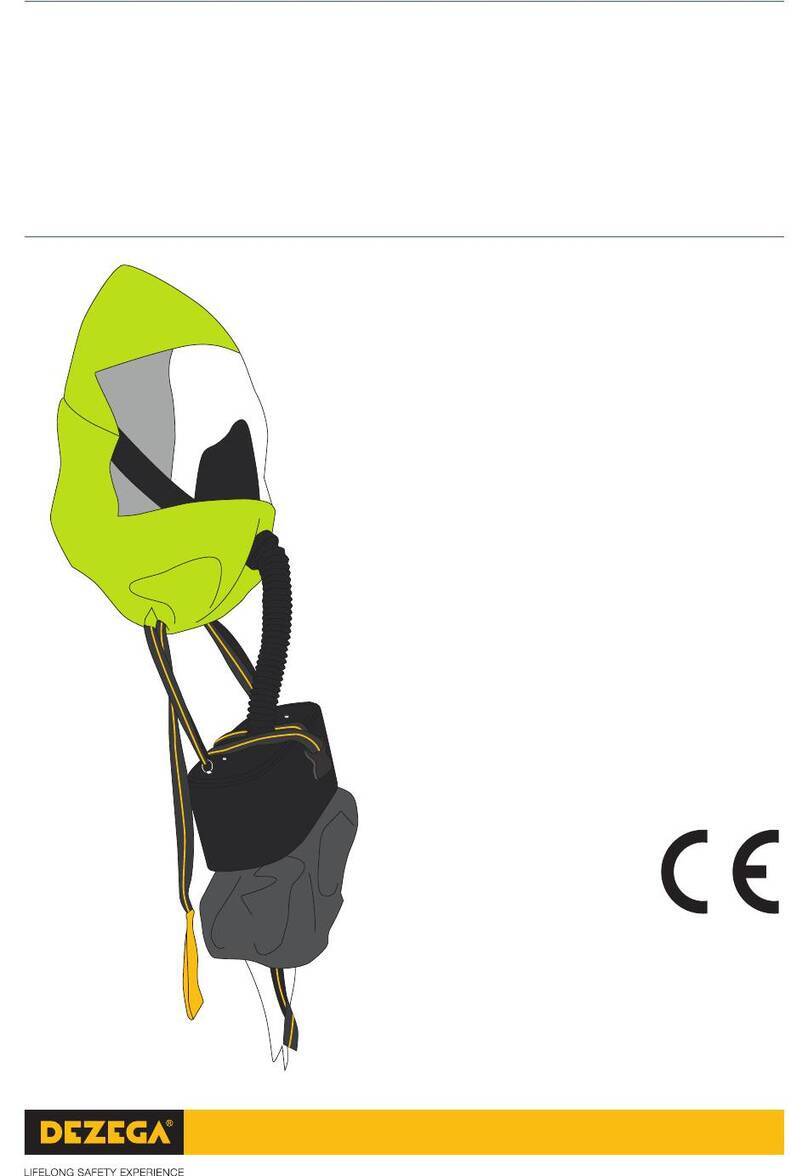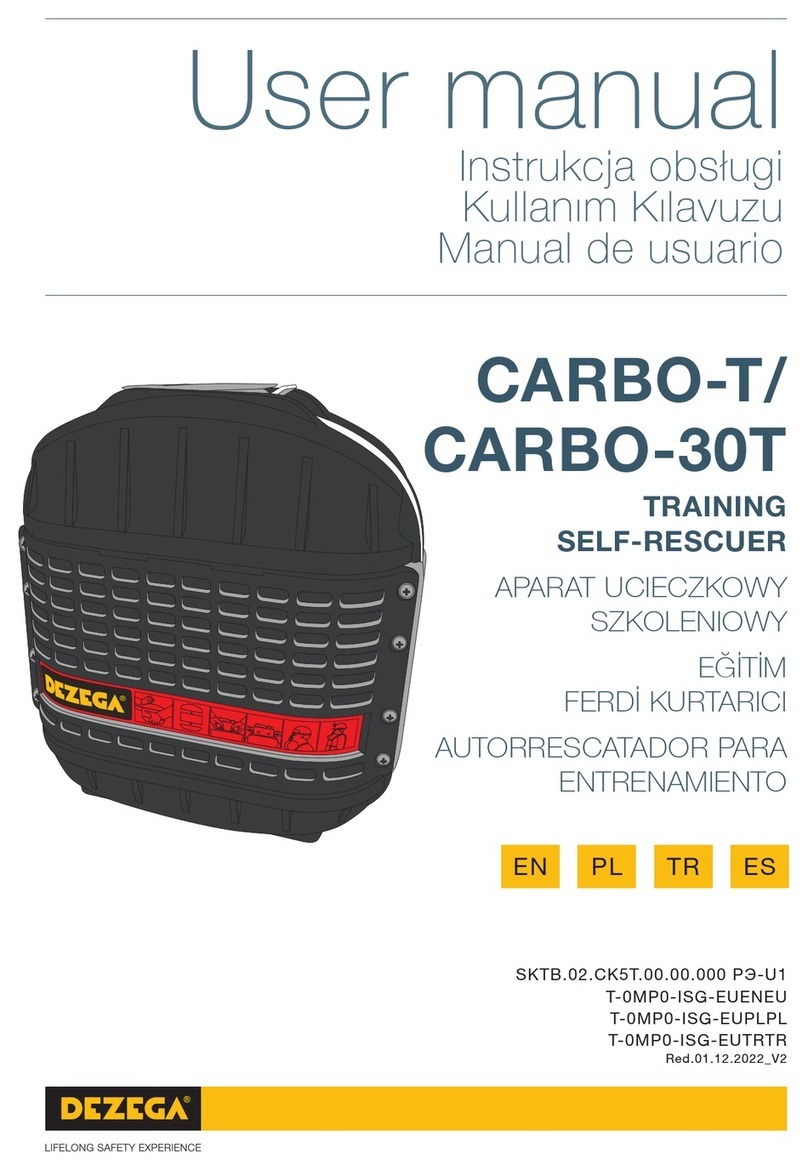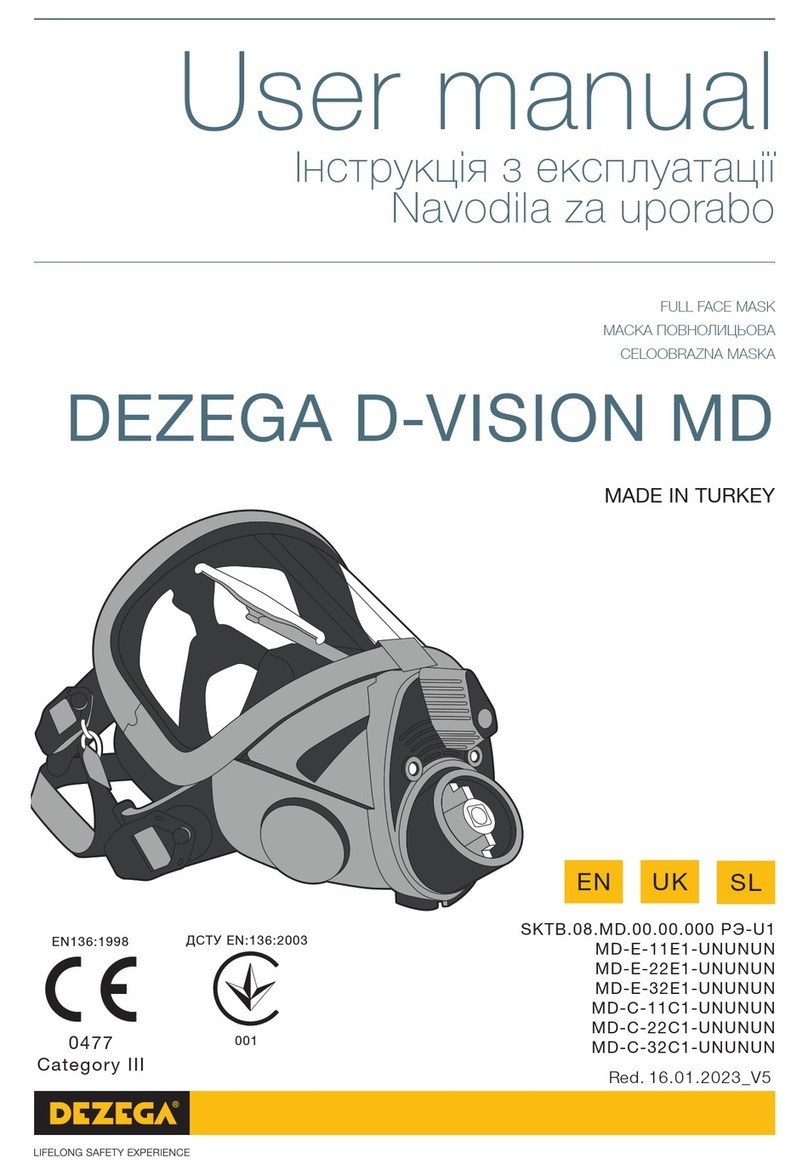
CARBO-T DEZEGA
8
The design, overall dimensions, weight, donning procedure and breathing
resistance of the CARBO-T training self-rescuer fully corresponds to the
self-contained self-rescuer on chemically bonded oxygen CARBO-60.
The self-rescuer consists of:
• the top lid, under which the neck strap, HME-imitator with a plug, nose
clip, breathing tube, antifogging protective goggles are packed;
• the cartridge-imitator;
• the bottom lid, under which a breathing bag and a chest strap are
packed.
A breathing bag and a breathing tube are connected to the nozzles of the
cartridge. The covers are pressed against the imitating cartridge by means
of a coupling strap.
The training self-rescuer is designed for carrying on a shoulder or waist
belt. The procedure for HME-imitator replacement is given in Section 8.
5. OPERATING PRINCIPLE
The operating principle of the CARBO-T training self-rescuer, equipped
with an imitating cartridge for practicing in a breathable atmosphere,
is as follows:
• overall dimensions, weight and carrying method of the CARBO-T
training self-rescuer are similar to respective characteristics of the
CARBO-60 self-rescuer. Due to this, the user trains the carrying skills;
• the force of opening the lock of the training self-rescuer CARBO-T
corresponds to the same parameters of the self-rescuer CARBO-60,
due to this fact, the user trains donning skills;
• when donning the self-rescuer, the user inhales air from the environment
through the inhalation valve, located on the HME-imitator side.
The exhaled air passes through the exhalation valve, located in the
HME-imitator nozzle, the breathing tube, the imitating cartridge,
the breathing bag and through the relief valve it is released into the
atmosphere. The breathing resistance in the training self-rescuer
CARBO-T is thus similar to the self-rescuer CARBO-60.
Before each training, the HME-imitator and the plug shall be replaced
with a new one or disinfected in accordance with the requirements,
set out in ANNEX A.











































